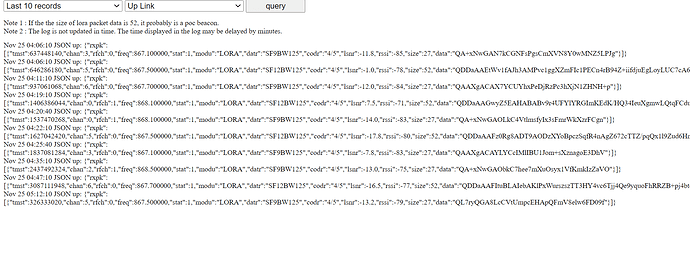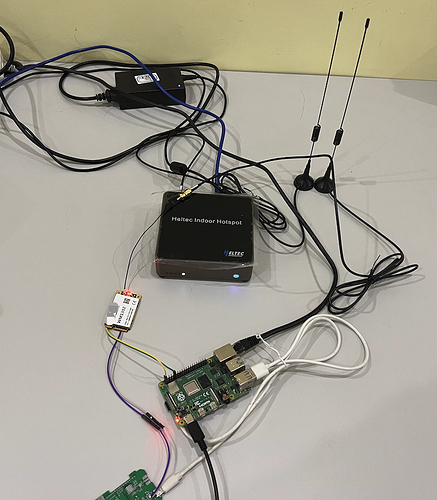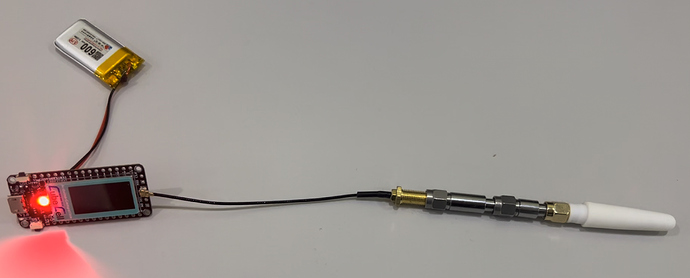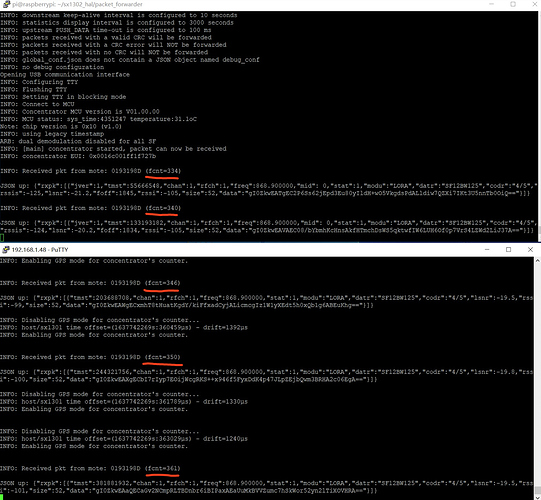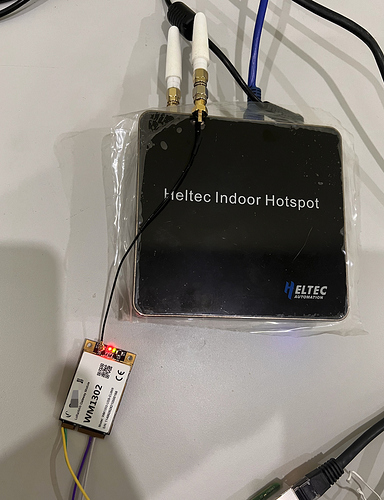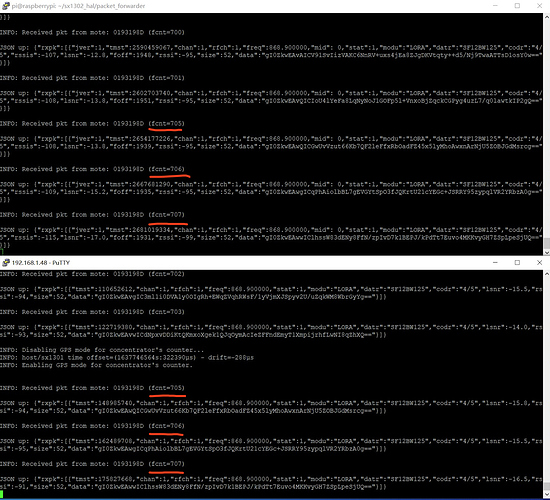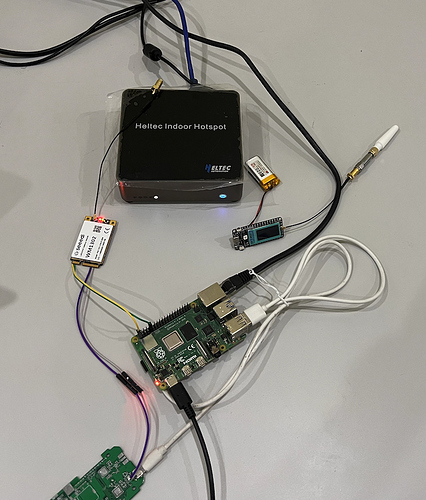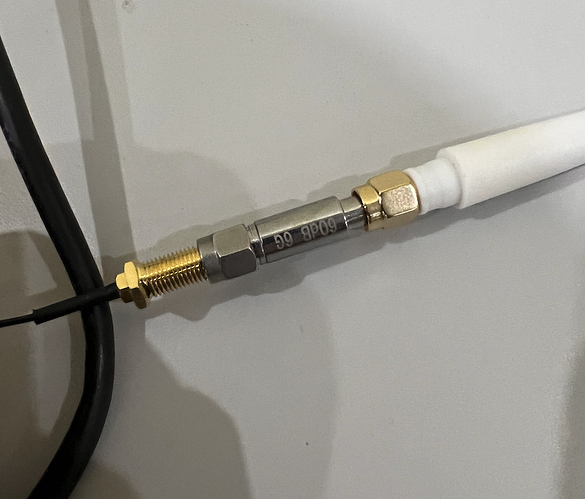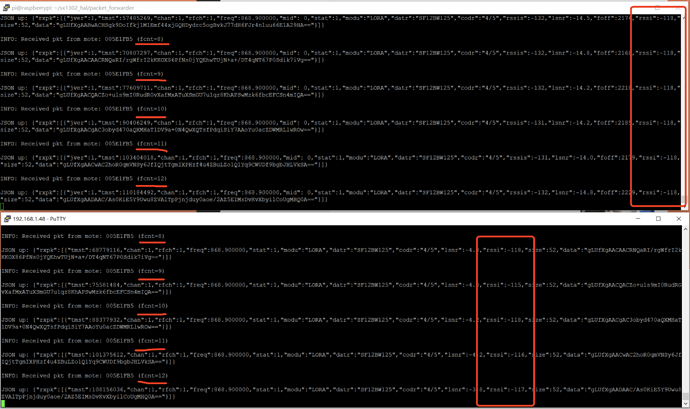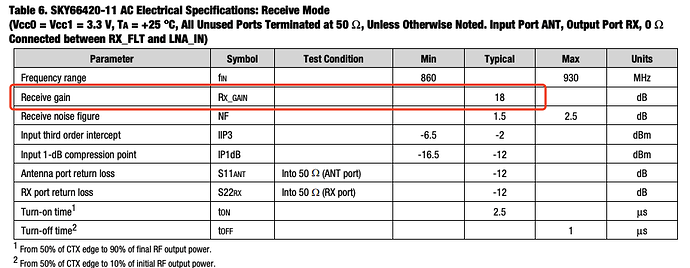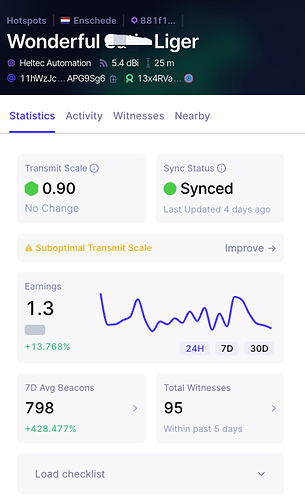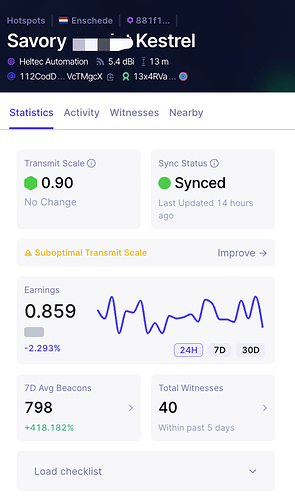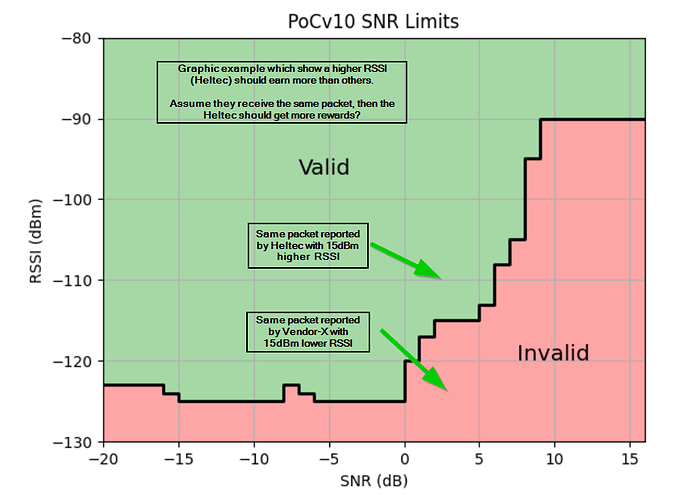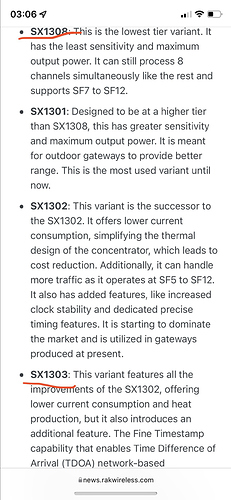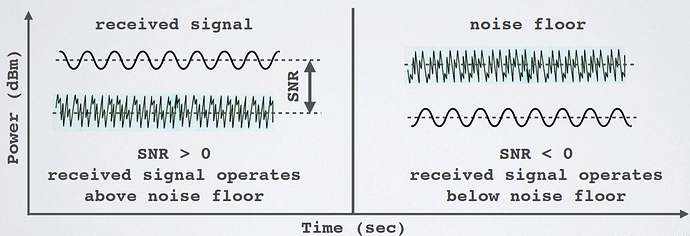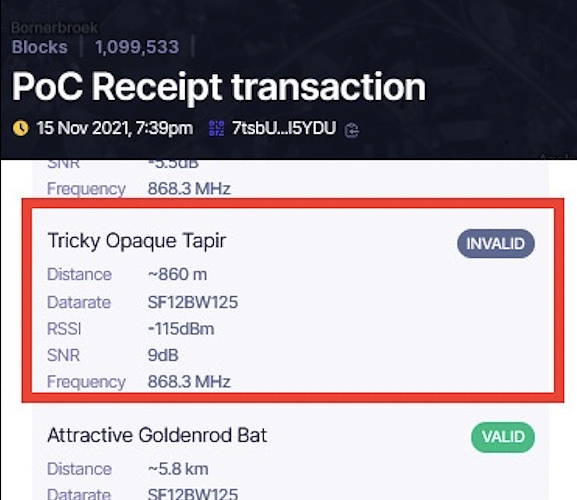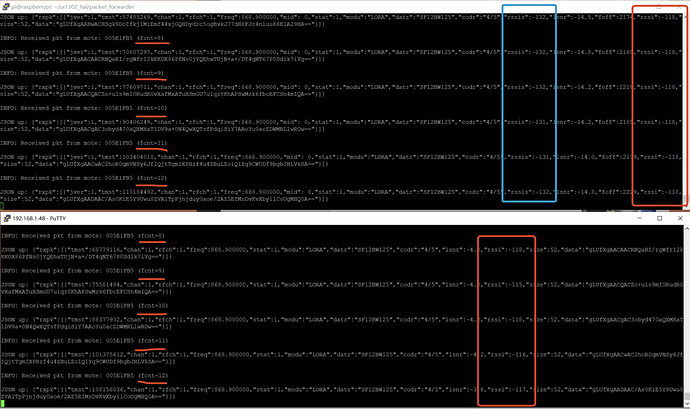More data.
Heltec HT-M2808 RSSI sensitivity
Hello,
I have the same problem with 6 of my heltec!!! This is not acceptable, please somebody fill a form and ask helium community to take action.
Hello from The Netherlands, I want to buy a Heltec Miner, but have some concerns after reading on this forum.
I also see that Heltec is performing tests a week ago.
Can somebody from Heltec please update us with a formal statement on the issues and their progress to solve this issue? Thanks in advance!
Tagging @Supporter please update us!
Since @Supporter @Mikmac can’t seem to be bothered to reply to my messages on discord, email and this forum it might be time to share this issue with a wider audience on Reddit and other communities. It’s not something that I want to do, but being ignored by the manufacturer on a serious issue after spending a lot of time on the subject isn’t nice.
@japie101
Don’t buy a heltec for now. It is a gamble if your unit will be OK and so far we identified a lot of bad performing units. Better buy a Sensecap for 2x or 3x the price on eBay as you will earn that back quicker.
Hi, I’m noticing that my Heltec hotspot is underperforming as well. I sincerely hope that Heltec support will examine these issues with the highest priority possible.
I compared my Heltec hotspot with my 2 most nearby hotspots (non-heltec, I think RAK) and I can see that these are 4 to 5 times better performing in witnessing/beacons and therefor as well HTN earnings.
Those other hotspots live like 400-600m from my location, same landscape (flat no high buildings), same setup height (checked myself visually), same dBi antenna.
When I use the helium.hiker website to compare the hotspots last 3 days of witnessed beacons indepth, I can see that my heltec operates from -58dBm to -115dBm RSSI. But the 2 neighbouring hotspots both work from -53dBm to -121dBm RSSI.
So it seems very clear that I’m missing quiet some beacons between -115 and -121, a rough estimate is like 40-60% missing.
Looking at the lora logfile of my heltec I can see that in a time frame of 2.5h I have received 22 beacons (data size 52) all valid SNR/RSSI values (Pocv10), but this result only in 3 registered witnesses.
The other 2 compared hotspots have 10+ registered witnessed in that same time frame.
If more info and/or logfiles are needed, feel free to reply or contact me.
Thank everyone for your feedback all the time. We attach great importance to this issue. Our R&D team has done a lot of experiments and tests on this issue.
We purchased LoRa gateway modules produced by other manufacturers and used the same LoRa end node to send data.
- Extreme communication test
The LoRa gateway side used the same antenna and conducted a comparison test at the same location.
We put the LoRa node in another office (separate a wall), and gradually increase the attenuator, when the attenuator value increases to 100dB
Whether HT-M2808 or the LoRa gateway module produced by other manufacturers, All alternately produced situations where the signal could be received by chance. It shows that the limit value has been reached.
Conclusion: It shows that the limit communication distance is similar. But it shows a different RSSI value.
- The impact of different antennas on RSSI
The LoRa gateway part is connected to a cheap, low-gain spring antenna, and the attenuator of the node remains unchanged, and the distance is closer to the LoRa gateway (because the gain of the antenna is reduced, the distance is reduced to ensure that the gateway can receive data more easily. Observe the RSSI data).
It can be seen that whether it is the HT-M2808 or the LoRa gateway module produced by other manufacturers, the lowest RSSI value has become larger.
Conclusion: The antenna and coaxial cable will affect the RSSI value.
- Remove the antenna at the same time
At the same time, the antenna is removed from the LoRa gateway, and a 60dB attenuator is added to the LoRa node. The node is very close to the gateway, almost next to the gateway.
Whether it is the HT-M2808 or the LoRa gateway module produced by other manufacturers, the following figure is a comparison of the minimum RSSI (difference within 5dB).
In a real communication situation, an antenna is necessary, otherwise it may cause permanent damage to the radio frequency circuit. The removal of the antenna here is only a short-term experimental need.
Conclusion: The results of experiment 2 be verified again; on the other hand, it can be explained that the lower RSSI of the gateway module does not mean that it can receive longer distances. It can only be explained as different manufacturers. In the same communication scenario, RSSI Behave as different values.
But under the same circumstances, why some HT-M2808’s RSSI higher?
-
The influence from the antenna and the coaxial wire, the attenuation of the antenna coaxial wire, the sensitivity of the antenna, the center frequency of the antenna, impedance matching and other conditions may affect the value of RSSI;
-
The LoRa baseband chipset used by HT-M2808 is SX1308+SX1257. The circuit is designed according to Semtech’s reference design. The FEM chip is SE2435L, and the FEM chip of the SX1302 reference design circuit is SKY66420.
The gain of SE2435L is 14~18dB (typical value is 16dB).
While the gain of SKY66420 is 18dB.
I believe that the data in the SKYWORKS data sheet is the conclusion after a lot of experimental verification. When the HT-M2808 handles the FEM gain, it is calculated according to the typical value of 16dB. In fact, the FEM gain at this time may be 14dB or 18dB. This causes the difference in the minimum RSSI.
But the trouble is that the difference is not a fixed value. In response to this problem, we are discussing if we need to release a patch, allow users can choose in the dashboard depending on their own situation whether to use the algorithm to correct the difference caused by FEM.
Main points of disagreement:
- The important thing is that the communication distance is similar, and the RSSI value does not affect anything;
- This patch will be friendly to cheating users;
- Just refer to the two Heltec Indoor hotspot reports by @fantasy2 via email (considered as the problem with receiving sensitivity), indeed the HNT earn are crazy high! Further proved that it does not affect the income.
In the future, we will optimize the hardware circuit to solve the difference in FEM gain.
We did not ignore this issue. On the contrary, after receiving such feedback, we have been actively following up on this matter. It took some time to wait for samples from other manufacturers and to do related tests and experiments, which led to the slow response.
We don’t want to know about the future. What are you doing about the present problem?
Thanks @Supporter for your intensive reply. I like to recap your information, could you confirm if I understand well?
-When the new batch is modified, are the units ordered last week modified when they are shipped?
-Which of the putty session is the Heltec (192.168.1.48???) and the LoraNode?
-Your test compared the RSSI levels of both nodes. The RSSI levels are a parameter in the PoC protocol, and they seems to be relevant to be 100% accurate? With you’re labsetup you show us that the Heltec unit is showing a louder (closer to 0) RSSI value. Which means we should be hitting the green POCv10 area more with heltec compared to other vendors? The opposite we see, lot of users are complaining about the bad earnings of heltec miners. Could you elaborate?
-Regarding to gain, is there any way you can test malformed data transmission in your lab? With a high gain its also possible you oversteer the RX circuit? Where datapackets in the lower levels <100dBm where unable to detect, due to the oversteer.
-With the patch you mentioned user can select a gain between 14-18dBm? A higher gain from 16 (current) compared to 18 (patch) should give higher RSSI values closer to 0 (e.a -119 with 16db gain, will become -117dbm with 18db gain)
-are you sure the gain is enable in software? If I noticed the -132 on the loranode and compared to your heltec node, its about 15dBm difference?
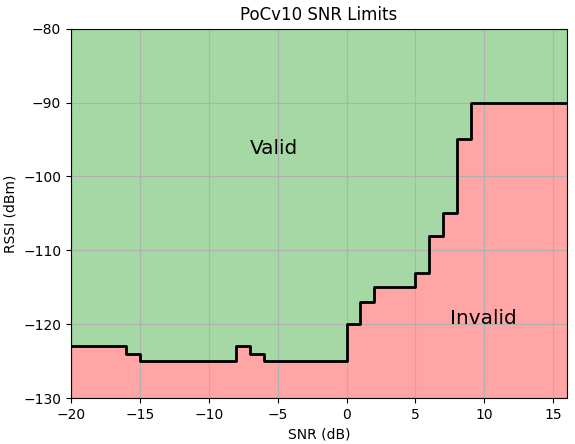
Please note LoraWAN could reach -135dBm levels
Heltec Indoor Hotspot (HT-2808) main attributes:
Main hardware
CPU: Quad-core Cortex-A53 64-bit 1.5GHz;
RAM: 2G DDR4;
ROM: 32G eMMC 5.1;
LoRa baseband: SX1308 + SX1255/7 chipset.
https://www.semtech.com/p…eless-rf/lora-core/sx1308
Up to -139dBm sensitivity with SX1257 or SX1255 Tx/Rx front-end
Illustration what I mentioned above, a higher RSSI should give you more valid PoC results. And higher earnings.
@fantasy2 are you’re screenshots the default stock nodes? I don’t believe this earnings, can we show 10 of this good working miners from Heltec?
@fantasy2 added input amplifers on both of these heltec units and he noticed a significant earnings improvement after adding these amplifiers.
Maybe we do not know everything about the POC algorithm.
This is just an hypothesis. What if the algorithm takes into consideration the average RSSI SNR values perceived by all the witnessing hotspots and exclude the ones with extremely different values thinking that these hotspots are gaming?
This is the only way that might cause heltec devices to earn much less than competitors cuz the RSSI / SNR values on the heltecs are apparently better (but different from the average values perceived by the other hotspots and then marked as gaming) yet they earn much less than competitors hotspot in the same place with same setup…
Heltec need to address the earning disparity issue regardless its clear
Can you share the link of the two miner @fantasy2 ? Judging from the data listed by @Supporter , I think I am not the only one who doubts you are gaming. If we are analyze the gaming data here, it doesn’t make any sense.
He is gaming with amplifier everyone else earnings are poor so we would like the patch
(Many thanks @Supporter for the extensive reply, I will give a longer reply later)
Very short answer:
To prove my point that there is an issue with receiving beacons I made a setup so the Heltec hotspot would receive a beacon at a higher RSSI(-90dBm to -80dBm).
Yes, this would considered gaming, but it is done to just prove a point. Since the signal is amplified the heltec is earning almost similar to other hotspot brands.
Without this amplification trick, the heltec would only make less than 0.2HNT while the other brand would make 1.5 to 2HNT a day on exactly the same location, the same time, same antenna, same cables. And yes, they are located at an exceptional location overseeing a lot of land hence the big rewards.
This performance cannot be blamed on the network. There are simply too many cases and I can turn the performance of the hotspot on and off. A bad performing Heltec device(which seem to be reflected in the RSSI) is simply earning less HNT over a period of weeks compared to other brands.
This test debunks Heltec’s conclusion that their hotspots all earn the same or more compared to other brands.
And I stated this before: some hotspots perform just fine, others are however not so lucky.
How many hotspots did you actually test @Supporter ? One? Or a batch of 4, 8 or 12?
I will reply more in depth to Heltec’s work later.
Most important is to find a solution and I’m happy that Heltec is actively investigating.
This isn’t the only issue!!! I looked at my Lora logs and I was picking up 12 witnesses an hour but non of them were getting registered on the helium network, rssi values were between -95 to -105, my antenna still picked them up and my heltec still logged it in the Lora logs, why were there no rewards from heluim? The helium network algorithm you say!!! Well today I swapped my heltec with a sensecap and surprise surprise I am witnessing almost 19 beacons an hour, getting rewards for all of them!!! Same location antenna and cable, just a straight swap!! Coincidence you say, well I swapped three of my heltec with sensecap, and all three are witnessing between 9-10 an hour!!! Where are my witnesses going??? That is the main issue! We are witnessing according to the Lora logs, packet size 52, but non of them get registered to the helium network!!! Plus you tested your units in a lab!!! We witness according to the Lora logs but the witnesses don’t get registered on the block chain! That is the main issue!!! Where are you sending our witnesses, out of 12 an hour I would expect 3/4 to get rewarded but I got nothing!! Sensecap in the same real world location got me 10/12 an hour!!! Please can explain this issue also! Test you units in real life whilst connected to the block chain and show me the Lora logs with the percentage of registered witnesses on helium!!!
You used the lowest grade Lora module in our devices also!!!
You use the top outlined module while sensecap use the bottom better unit!!! Explain this please!!!
Regarding the amplifier…I think there are some unreasonable situations.
It is necessary for us to review the relevant knowledge of communication principles first:
In wireless communication, SNR stands for Signal-to-Noise Ratio, the signal-to-noise ratio. The signal here refers to the electronic signal from the outside of the device that needs to be processed by this device, and the noise refers to the irregular signal that does not exist in the original signal. Noise is independent of the original signal and cannot be eliminated. There is no direct connection between the two.
Under normal circumstances, floor noise is the limit of sensitivity (such as FM, AM, FSK), but LoRa spread spectrum communication is a typical system that can still work when the signal is lower than the floor noise! It can demodulate the signal that is lower than the floor noise up to -20dB.
- When SNR > 0, the noise is smaller than the original signal, Noise = RSSI - SNR, the original signal strength of LoRa at this time: S(original) = RSSI
- When SNR < 0, the noise is greater than the original signal, Noise = RSSI, the signal strength of LoRa at this time should be: S(original) = RSSI + SNR
We found some previously analyzed data (the time was about 10 days ago). In the blue box, we can see that the SNR value is negative, and the RSSI at this time is the intensity of the noise. We can think of that’s before installing the amplifier.
In the recent witness data, we see that the RSSI has become lower. Is this the data after the amplifier has been added? But there are two contradictions:

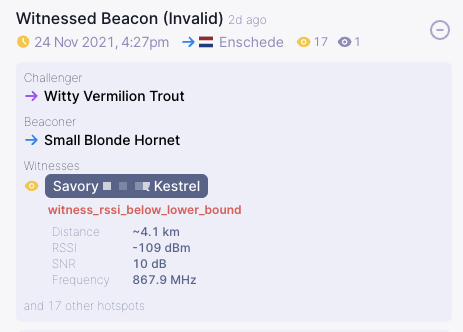
- If it is an amplifier, which causes the signal to become stronger, the RSSI should become larger, not smaller;
- The SNR value has become a positive number and reached an almost perfect 11.
This is difficult to explain… Before the amplifier was installed, the noise was greater than the original signal. After installing the amplifier, the noise was perfectly isolated. How does the amplifier only amplify the useful signal and greatly reduce the noise?
Do you know the amplifier type? Or some parameter of this amplifier? We can carry out further tests.
@Supporter please look into the software defect first. The info from @pgw2021is also shared in my country. There are more 52 size packets in the Lora log which got not processed (whitenesses) by the heltec node. Which means that needs to get priority above the RSSI issue. The defect of processing could be a software issue.
The one with an IP address is HT-M2808, and the one driven by RPI is made by other manufacture.
Sorry for my fault, in the last posted picture, I wrongly chose the RSSIS as the comparison item. Shown in the blue box here (It’s really easy to confuse):
I think many guys have the same experience: did not notice there was an RSSIS 
Indeed it’s a new parameter in SX1302.
- When SNR < 0: RSSIS = RSSI + SNR
- When SNR > 0: RSSIS = RSSI
In the experiment, we had shown the RSSI has a difference with some SX1302 based gateway, but not so crazy.
And in the previous experiment, which proved to except the influence of antennas and coaxial wire, the RSSI we measured was within 5dB from the data of other manufacturers, which verified the difference caused by the FEM gain.
The only question is that many people confuse RSSI and RSSIS.

